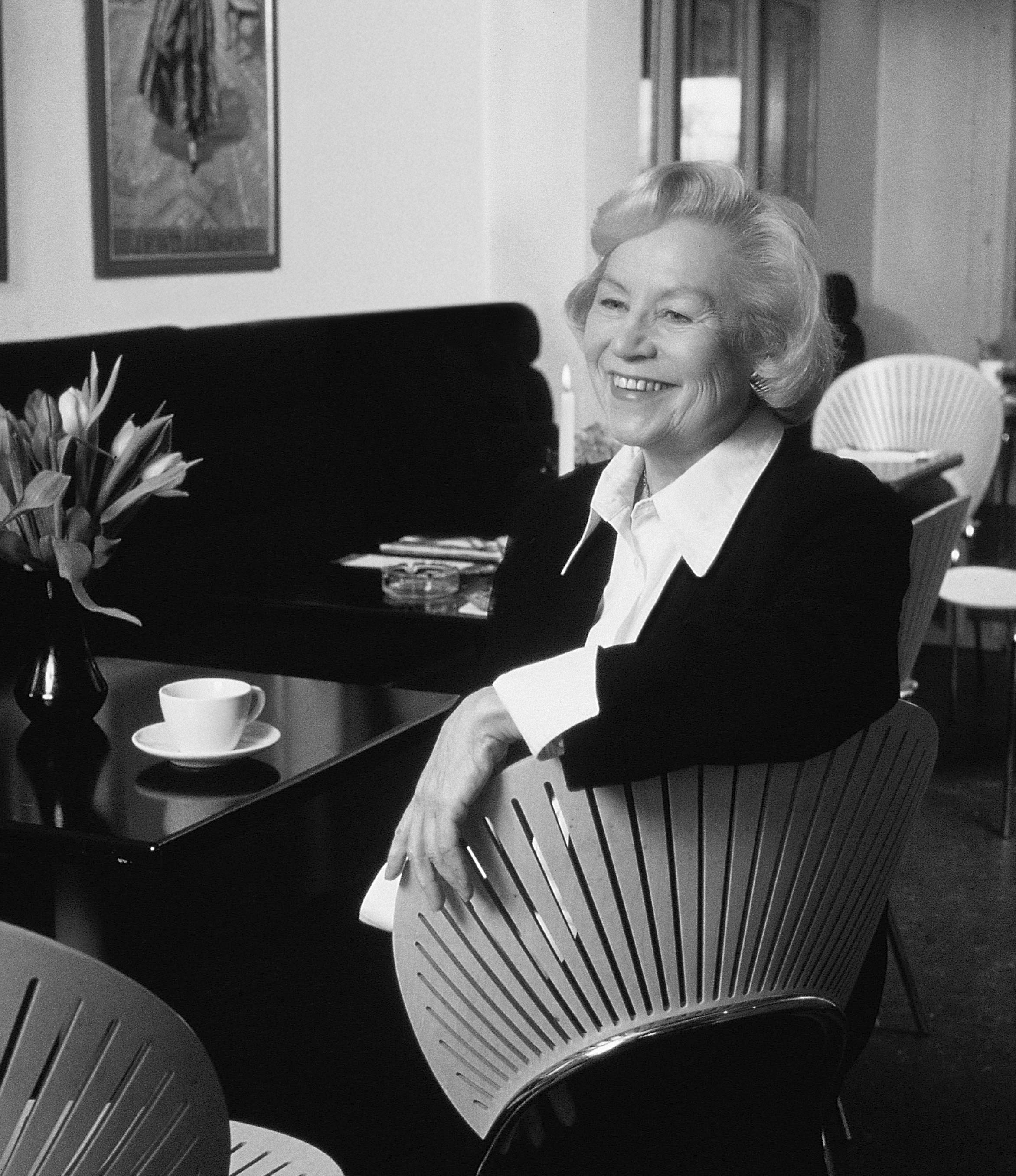
In 1992, Claus Lundsgaard contacted Nanna Ditzel about an assignment that resonated perfectly with her idea of good furniture design.
Nanna Ditzel was asked to design a functional office chair that would enable people with a seated job to sit actively.
Claus’s thoughts on an active seated posture
Claus told Nanna Ditzel about his back pain issues, which arose when he spent too long sitting down. He had designed a seat based on a saddle, an idea born from his younger days spent in America, where he had noticed how American cowboys could spend all day in the saddle without getting back pain.
Claus had intuitively thought that a saddle-shaped chair might be a good alternative that could alleviate back pain, as the saddle shape forced the rider to sit up straight, thus limiting strain on the spine.
This position also meant the legs wouldn’t be locked in place, as they are when sitting on a normal office chair. However, Claus realised that the horse’s movements greatly strengthened the body's ability to be active, which meant that the chair had to be light and mobile, allowing you to easily move around.
He also discovered that the seat’s shape couldn’t be too wide, as this caused pain in the hips due to the outward rotation of the hip joints.
The InCharge chair took shape
Nanna Ditzel found the assignment interesting. She wanted to design an office chair based on people’s need for an active seated posture.
Her idea of creating furniture based on human needs resonated with Claus’s idea of an office chair that adapted to your body, and not the other way around.
 Nanna Ditzel wanted to ‘tailor’ an anatomical-physiological piece of furniture that focused on what was best for the body in a seated working position. She was inspired by Achille and Pier Giacomo Castiglioni’s chair, “Sella”, from 1957, which had a bike seat; an elegant solution to a chair that encourages an active seated posture.
Nanna Ditzel wanted to ‘tailor’ an anatomical-physiological piece of furniture that focused on what was best for the body in a seated working position. She was inspired by Achille and Pier Giacomo Castiglioni’s chair, “Sella”, from 1957, which had a bike seat; an elegant solution to a chair that encourages an active seated posture.While designing the chair, Nanna Ditzel strived to create a shape that adapted to the way the body shapes itself in the seated position. Like Claus, she was aware that the shape of the seat was of great importance, so she experimented with different shapes and materials.
It was equally important to create freedom of movement, and a sense that the chair didn’t inhibit the physically active seated position. And then the chair also had to make you feel evenly balanced when sitting on it.
Breaking away from the conventional aesthetics of the office chair was far from easy, but she succeeded and the result was the InCharge chair. With a seat shaped to fit the human pelvis, this elegant chair provides an upright seated posture that helps prevent your back from slumping. The elevation at the front helps to prevent you from sliding down the chair. Another important function of this elevation is that it prevents you from crossing your legs, which can stop the blood supply and lead to other harmful effects on the body.
A back and armrest serve no purpose on an office chair, which is why the chair is designed without them, making it half the weight of a standard office chair.
The metal frame that encircles the seat reflects Nanna Ditzel’s love of organic shapes and the creation of a sense of wholeness in her design. The frame is not a backrest, but serves as a handle to grab hold of, making it easier to move the chair around and to adjust the seat as you sit down.
Working with Nanna Ditzel
Today, Claus looks back fondly at working with Nanna Ditzel. “She was a lovely person who I greatly respected. She was attentive and really listened, and she transformed my thoughts into the perfect office chair. I am eternally grateful to her.”
Who is Nanna Ditzel?

For those who don’t know her, here’s a brief introduction to Nanna Ditzel.
Nanna Ditzel was one of the few women to make a name for herself in the male-dominated world of design in the mid-1950s. Her designs were known for their ability to solve simple human issues while being aesthetically beautiful and harmonious to look at. She had a confident style that broke with tradition, and her sense for combining colours and shapes, whether textiles, jewellery or furniture, soon made her designs popular. Nanna Ditzel became of Denmark’s most prominent and innovative female designers, and her work has been exhibited all over the world. She has received numerous national and international awards for her designs and furniture. Today, she is considered one of Denmark’s most important and experimental designers.

Nanna Ditzel’s designs include the Trisse furniture (1965), the Butterfly chair (1990) and the Trinidad chair (1993). Many of Nanna Ditzel’s furniture designs are used in the public space, as her sense of colours, shape and function are both compelling and highly practical. Like many of her colleagues, she has based her designs on the design of the human body, and wrapped them in aesthetic comfort.
The InCharge chair is designed for anyone with a seated job. It comes with a choice of covers, depending on whether you work in a dental clinic, the health sector or in an office.


Share:
The office body